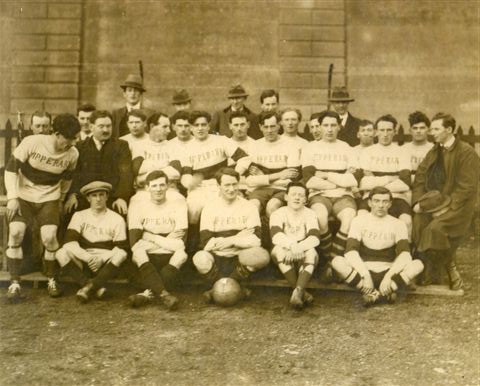To mark 100 years since Bloody Sunday in Croke Park, the Abbey Theatre has commissioned 14 writers, actors, and directors to produce unique re-examinations of the 14 people who were killed on November 21th, 1920. Featuring 14 different voices and interpretations of the lives lost, the show has been streamed on the Abbey’s social media today.
In an interview with The University Times, writer Tracy Martin discusses her take on the voice she was assigned and its wider importance. Discussing the historical context, she explains that 14 suspected British spies were killed on the morning of Bloody Sunday 1920, under Michael Collins’ orders, which resulted in a retaliation by the Black and Tans at a Gaelic match in Croke Park later that day.
Martin has been writing the voice of James Matthews, who she stresses was “a very normal guy”. He was shot in the leg after climbing a tree to escape the stadium and died from the wound, in addition to being trampled. Matthews was a father of two with his wife Kate, Martin tells me, who both worked in the bakery on Parnell St, not far from the tenement where they lived.
One of the most important elements of the play, in Martin’s view, is the nature of James and Kate’s relationship. “I wanted to explore what worries and stress levels might be in the partnership”, she says, adding that Kate likely would have been “wondering [if] her husband [was] leaving her with the pressures of the war and the rising, and whether he should get involved or not”.
Director Dan Colley has been working on another story within the production, that of 11-year-old Perry Robinson. Colley was paired with writer Linda Radley on the project, whose previous youth-centric work had inspired him. Together they decided to cast 15-year-old Jack Galvin in the role of Robinson.
“We thought a bit about how you go about making people believe that there’s an 11-year-old boy in the room”, Colley says, explaining this casting choice. “One approach is the very active suspension of disbelief – there may be no boy, there may be no pitch, but we believe that it’s the case. And the other one, the one we decided to go with because it moved from being in-person to being filmed, was working with a young person.”
He cites productions such as Dead Centre’s Hamlet as inspiration for his piece since it demonstrated the possibility of having a “very weighty play on a young person’s shoulders”. He comments that “people love seeing that onstage”.
From this part of the show, Colley explains that audiences should “expect a really lovely 14 minutes spent in the company of a young person whose life is ahead of him as he grapples with the question of ‘What kind of grown-up does he want to be in a world where grown-ups are behaving really badly?’”
For all his enthusiasm, Colley notes that Perry Robinson’s story is bittersweet. So, the audience should also expect “somebody who doesn’t know that actually he doesn’t have much longer to live, so his enthusiasm for life is tinged with a sadness about how short his life is about to be”.







